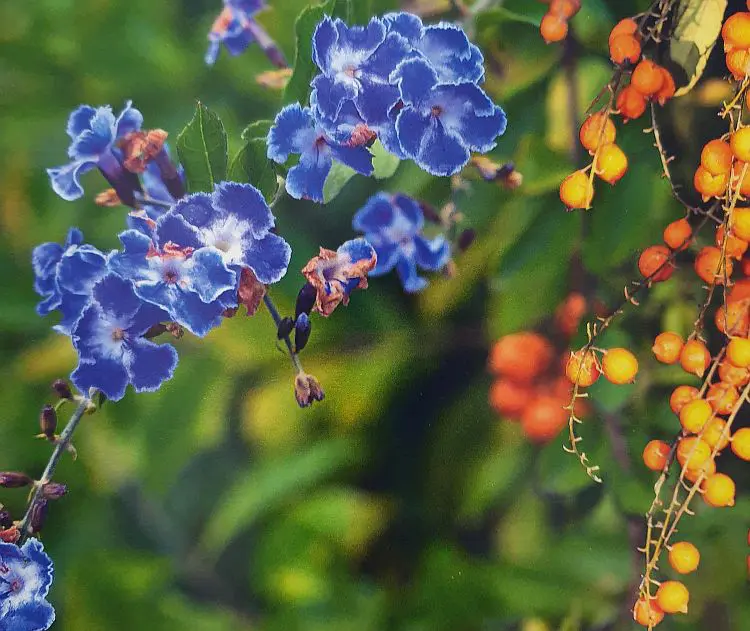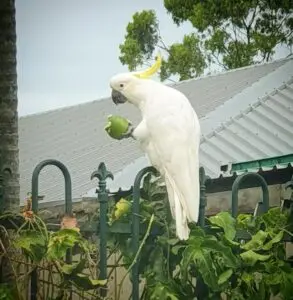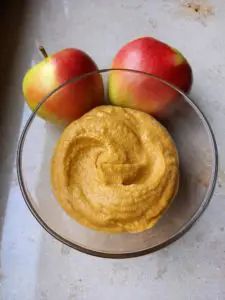A surprising amount of common plants are in fact environmental weeds. Many of them are still sold as desirable plants at nurseries and hardware stores nationwide, so it’s no wonder that we don’t realise the damage they can do to our environment. Environmental weeds comes in all forms- they can be trees, shrubs, grasses, vines, aquatic, or even succulents.
These kinds of weeds are what you might call ‘silent but deadly’. They can disrupt ecosystems, compete with and replace native plants, reduce food and shelter for native species, change fire regimes and create soil erosion. They alter habitat and reduce biodiversity in both land and marine environments, and can adversely affect the recreational, social and commercial value of ecosystems. Those that live alongside creeks can affect water flow and worsen the effects of flooding. In short, they might look attractive and be sold to you as a good thing, but they can be far from it.
Every country has their share of environmental weeds- there are many more than shown here. These are a few that are common to south-east Queensland but are now spreading to many other parts of the world. For more information, see the Brisbane City Council weed identification tool & the global invasive species database.
Duranta

Scientific name: duranta erecta, duranta repens
Common names: Brazilian sky flower, forget-me-not bush, golden dew drop, golden tears, pigeon berry
Habit: evergreen, dense, thorny shrub to 5m. Grows vigorously with drooping branches to form dense thickets. Has attractive small purple flowers and small round orange berries.
Origin: South America.
Found: now widely naturalised along the east coast of Australia, Norfolk Island, and many other countries. Duranta can be seen in waste areas, roadsides, wetter pastures, open woodlands and densely forested areas, and particularly along waterways in sub-tropical and tropical regions.
Issues: all parts of the plant are toxic. This species mainly propagates via seed which is dispersed by birds, bats, storm water runoff & the inappropriate dumping of garden waste.
Weed status: classified as an environmental weed in QLD & northern NSW. Listed in the top 100 most invasive species in QLD, and classed a ‘sleeper weed’ elsewhere in Australia.
Purple Succulent/Fragrant Inch Plant

Scientific name: callisia fragrans
Common names: basket plant
Habit: ground cover. Spreads laterally via long runners. Small white flowers in early spring.
Origin: Central America
Found: Naturalised in the coastal districts of eastern Australia (i.e. in southern and central Queensland and northern and central New South Wales). Also naturalised on Lord Howe Island. Naturalised overseas in south-eastern USA (i.e. Florida and Louisiana) and Hawaii.
Issues: Spreads quickly & forms extensive dense mats which will out-compete other vegetation. May cause allergic reactions in children & pets. Can rapidly overtake bushland and prevent natives from propagating.
Weed status: This long-lived perennial is regarded as a significant environmental weed in seQLD and is on many council weed lists.
Murraya

Scientific name: murraya paniculata cv.’exotica’
Common name: mock orange, Chinese box, honey bush, jasmine orange
Habit: evergreen, rounded shrub to 12m. White star-shaped flowers to 4 cm appear in clusters in spring. Glossy red/orange berries to 2cm.
Origin: Native to southern China, Taiwan & southern India.
Found: widely naturalised in the coastal districts of eastern Queensland and northern New South Wales. Mock orange (Murraya paniculata) is also naturalised overseas on La Réunion, in south-eastern USA (i.e. Florida), Central America (e.g. Belize and Panama) and Hawaii.
Issues: Currently ranked among the top 200 most invasive plant species in south-eastern Queensland, mock orange has the potential to become a serious weed.
**Note**
Australian native mock orange (Murraya paniculata) is very similar to the cultivated exotic form of mock orange (i.e. Murraya paniculata ‘exotica’). The latter is the environmental weed. These plants can usually be distinguished by the following differences:
- mock orange (Murraya paniculata ‘exotica’) has relatively large leaflets (3-7 cm long).
- native mock orange (Murraya paniculata) has relatively small leaflets (1.5-4 cm long).
Fishbone Fern

Scientific name: Nephrolepis cordifolia
Common name: fishbone fern, sword fern, herringbone fern
Habit: This fern has upright or drooping fronds which are usually up to 50 cm long. This species produces distinctive round tubers on its creeping underground stems, which look like round brown fibrous bulbs. Its ‘leaves’ are divided into numerous alternatively arranged narrow ‘leaflets’ (10-35 mm long and 4-11 mm wide).
Origin: native
Found: Naturalised in Victoria, coastal districts of south-western Western Australia, on Norfolk Island and beyond its native range in the coastal districts of central New South Wales south-east Queensland & north-eastern New South Wales. Widely naturalised in Africa, temperate Asia, New Zealand and south-eastern USA (i.e. Florida, Alabama and Georgia).
It is mainly a weed of parks, gardens, roadsides (as shown above), fence lines, disturbed sites, waste areas, railway lines & suburban bushland in sub-tropical and warmer temperate regions.
Issues: While this fern is generally regarded as an Australian native, it has become invasive outside its natural range. It chokes out other low growing plants and stops other native plants from growing.
Weed status: regarded as an environmental weed in NSW & QLD, and complete removal is recommended by local councils in these areas.
Mother-in-Laws Tongue

Scientific name: Sansevieria trifasciata
Common name: mother-in-laws tongue, snake plant
Habit: Mother-in-Laws tongue is a succulent, invasive herb that produces erect lance shaped leaves of between 50-120cm in height and 3-9cm wide. This is a spreading or clumping plant which develops a network of creeping underground stems. This plant spreads its seed via wind & gravity, and propagates further as the rhizome grows laterally underground.
Origin: tropical Africa
Found: Widely naturalised in eastern Australia, particularly in se QLD & northern NSW). Also naturalised near Darwin, in the north-western parts of the Northern Territory, and on Lord Howe Island. Overseas, it is now naturalised in south-eastern USA (Florida), the Caribbean (Puerto Rico and the Virgin Islands) and on several Pacific islands (Cook Islands, Fiji, Palau, Western Samoa and Hawaii).
Sansevieria is commonly found along roadsides, waste areas, and in reserves adjoining residential estates.
Issues: This plant, as with most other environmental weeds, is more hardy than many of our natives. This means that it will out-compete valuable natives and prevent them from thriving as they should.
Weed status: Mother-in-laws tongue is regarded as an environmental weed in Queensland, New South Wales and the Northern Territory, and as a “sleeper weed” in other parts of Australia.













